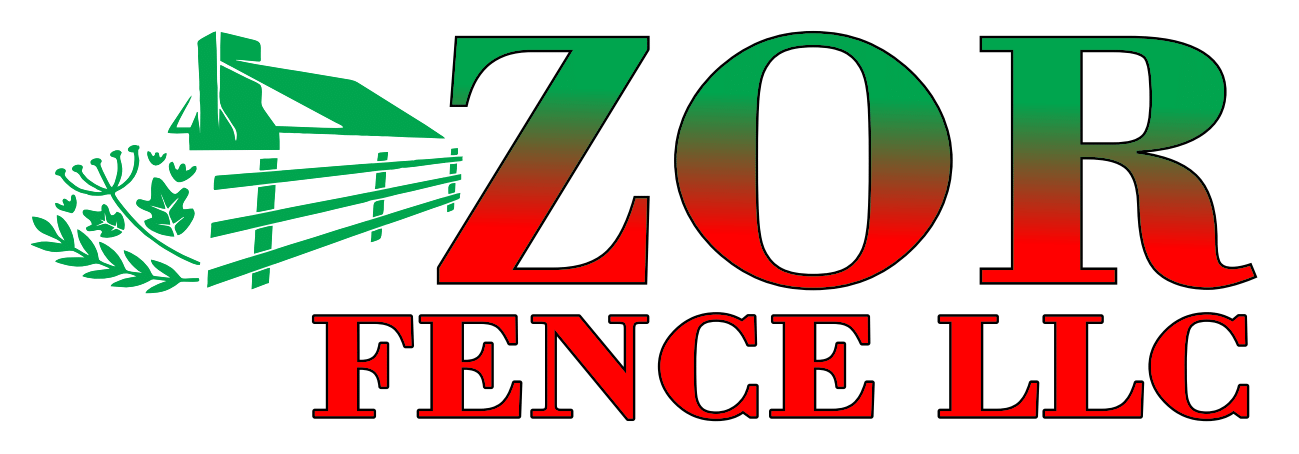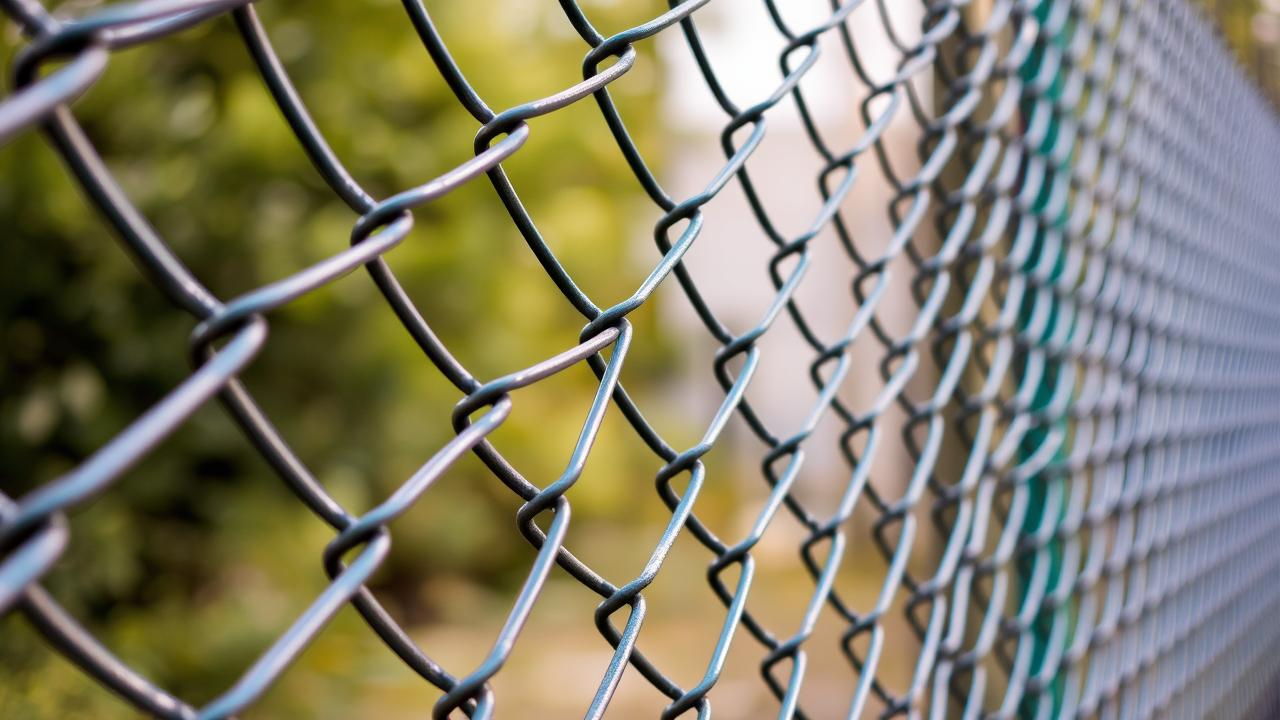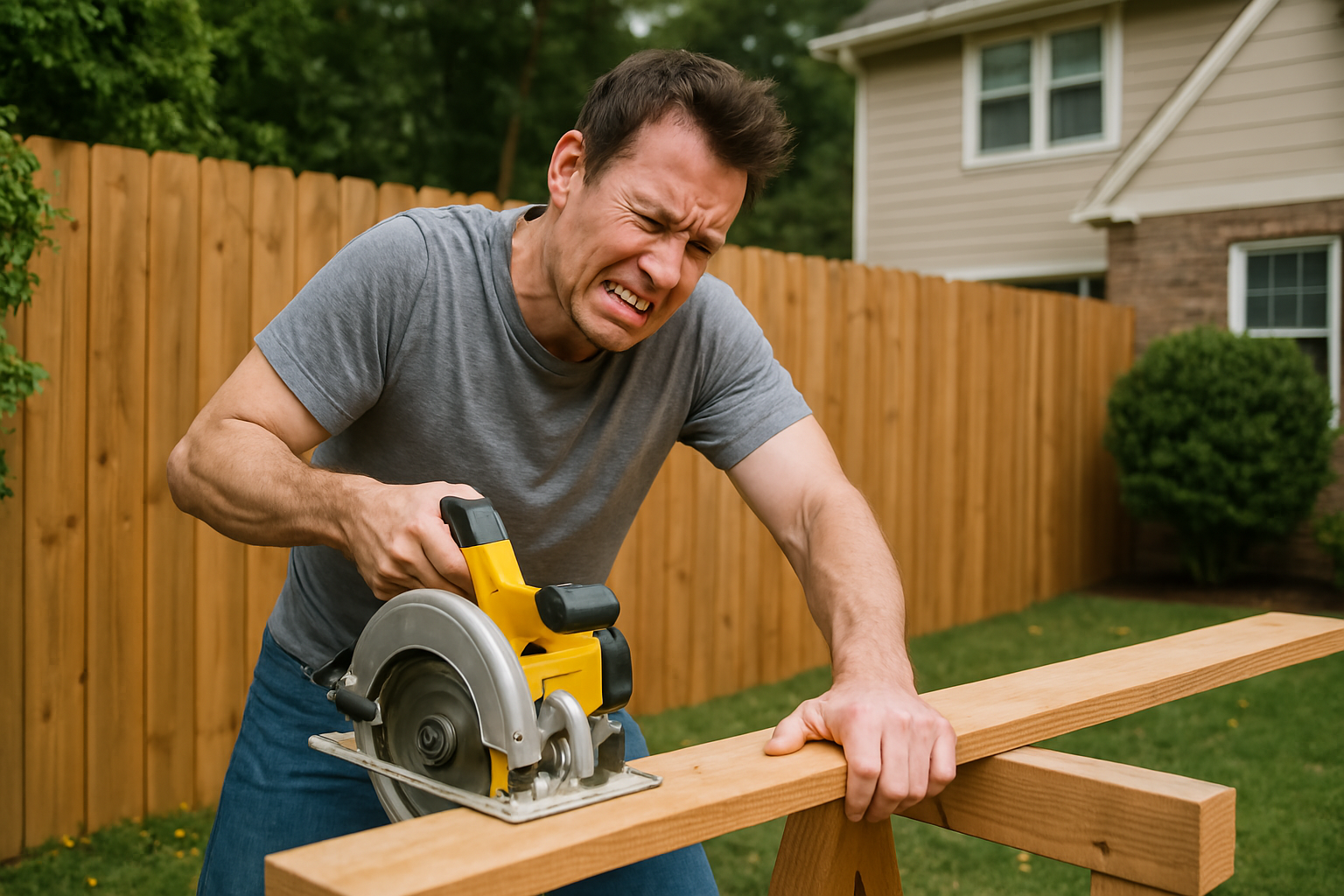The best place to start is with your “why.” Every homeowner has different priorities, and understanding yours will help you narrow down the ideal fencing solution.
Privacy and Noise Control
Live on a busy street or next to a curious neighbor? Solid panels—like vinyl or board-on-board wood—block sightlines and reduce noise. If peace and privacy are your top concerns, consider fences at least 6 feet high with minimal gaps.
Security and Safety
If you’re concerned about intruders, choose materials that are hard to scale or break. Metal fences with spear tops or tall vinyl privacy fences with reinforced posts add a strong security element. For pets and children, it’s about containment—look for fences with minimal gaps at the base and lockable gates.
Aesthetic Enhancement
Some homeowners want a decorative feature to frame their home. In that case, a white picket vinyl fence or black aluminum design might be perfect. These add charm without overwhelming the yard.
Fence Materials Compared: Pros, Cons, and Cost
Choosing the right material is often the hardest step. Let’s break down the most popular options.
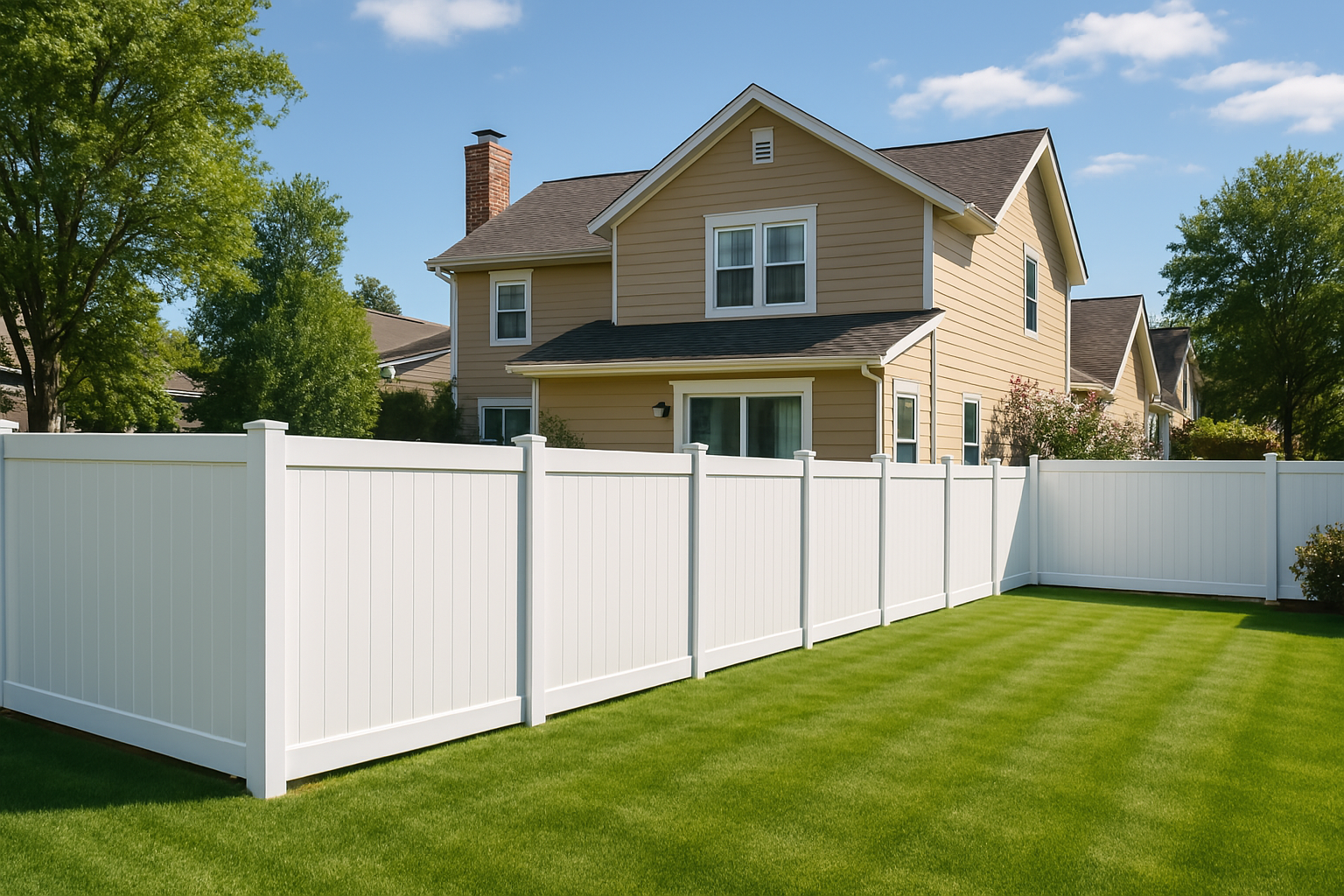
Vinyl
Vinyl fences are made from high-quality PVC and have become a favorite for modern homeowners.
- Advantages: Never needs painting or staining, resists mold and moisture, won’t rot or fade.
- Disadvantages: Higher upfront cost, may crack in extreme cold if not properly installed.
- Best for: Homeowners looking for a long-term, low-maintenance investment.
- Price Range: Medium to high depending on height and design.
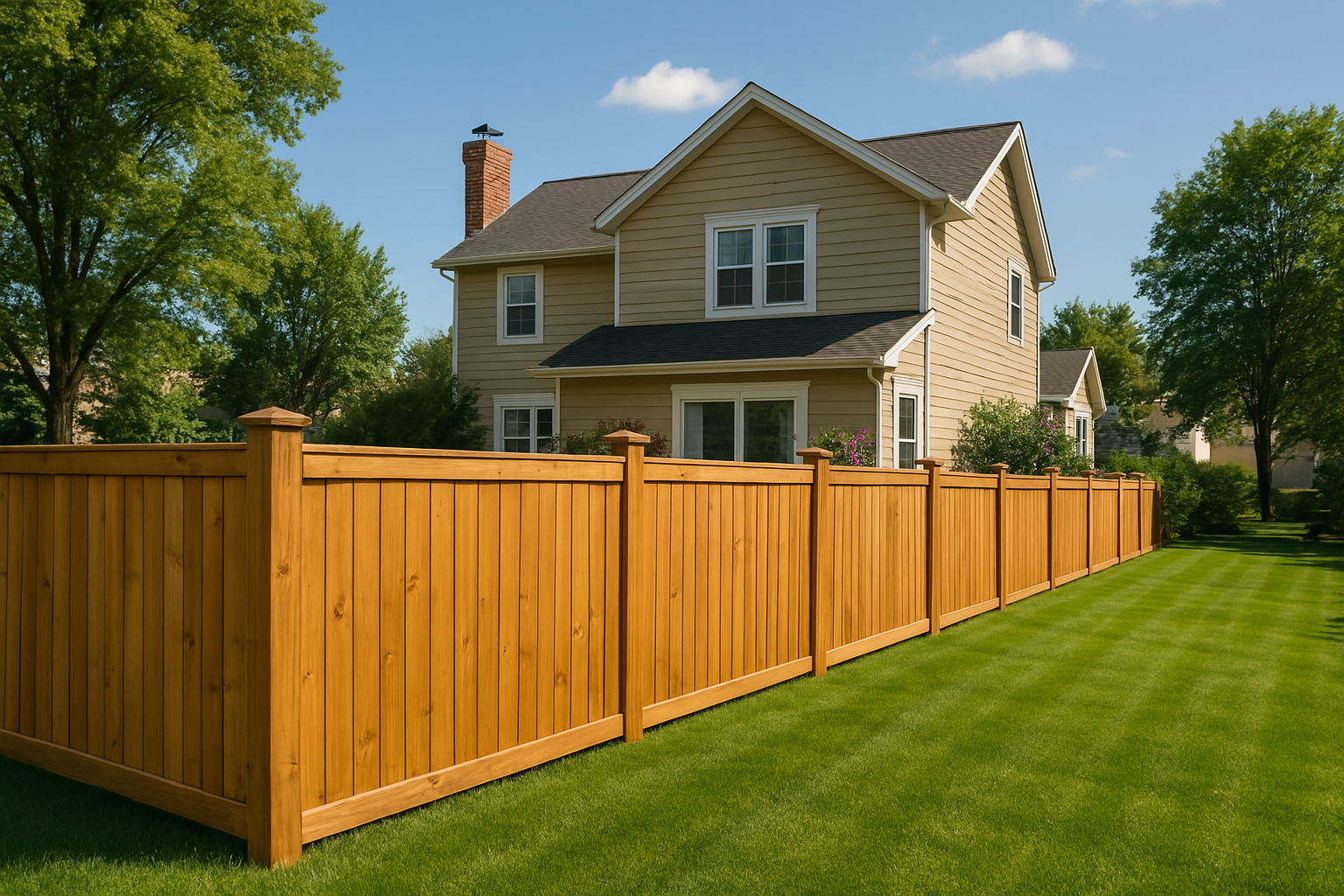
Wood
Wood remains a classic for its warmth and versatility, but it requires more care.
- Advantages: Natural, customizable, renewable resource.
- Disadvantages: Vulnerable to termites, rot, and warping without ongoing maintenance.
- Best for: Those who prefer a natural look and don’t mind staining or painting.
- Price Range: Low to high depending on wood type (cedar, redwood, pine).
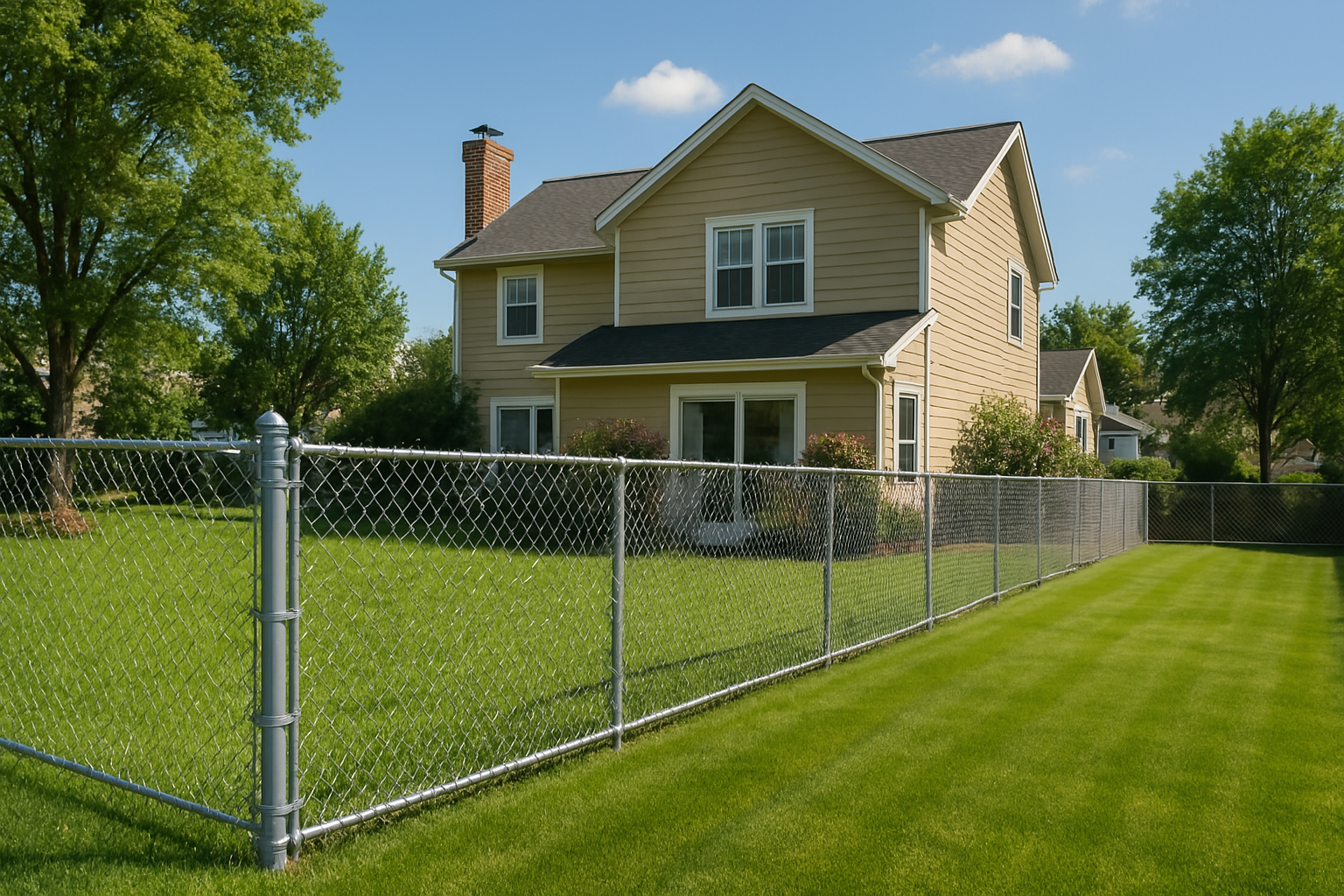
Chain-Link
Chain-link fences are functional and affordable but not the most attractive option.
- Advantages: Durable, inexpensive, easy to install.
- Disadvantages: Offers minimal privacy and aesthetic value.
- Best for: Pet containment, large yards, or utility areas.
- Price Range: Lowest among all options.
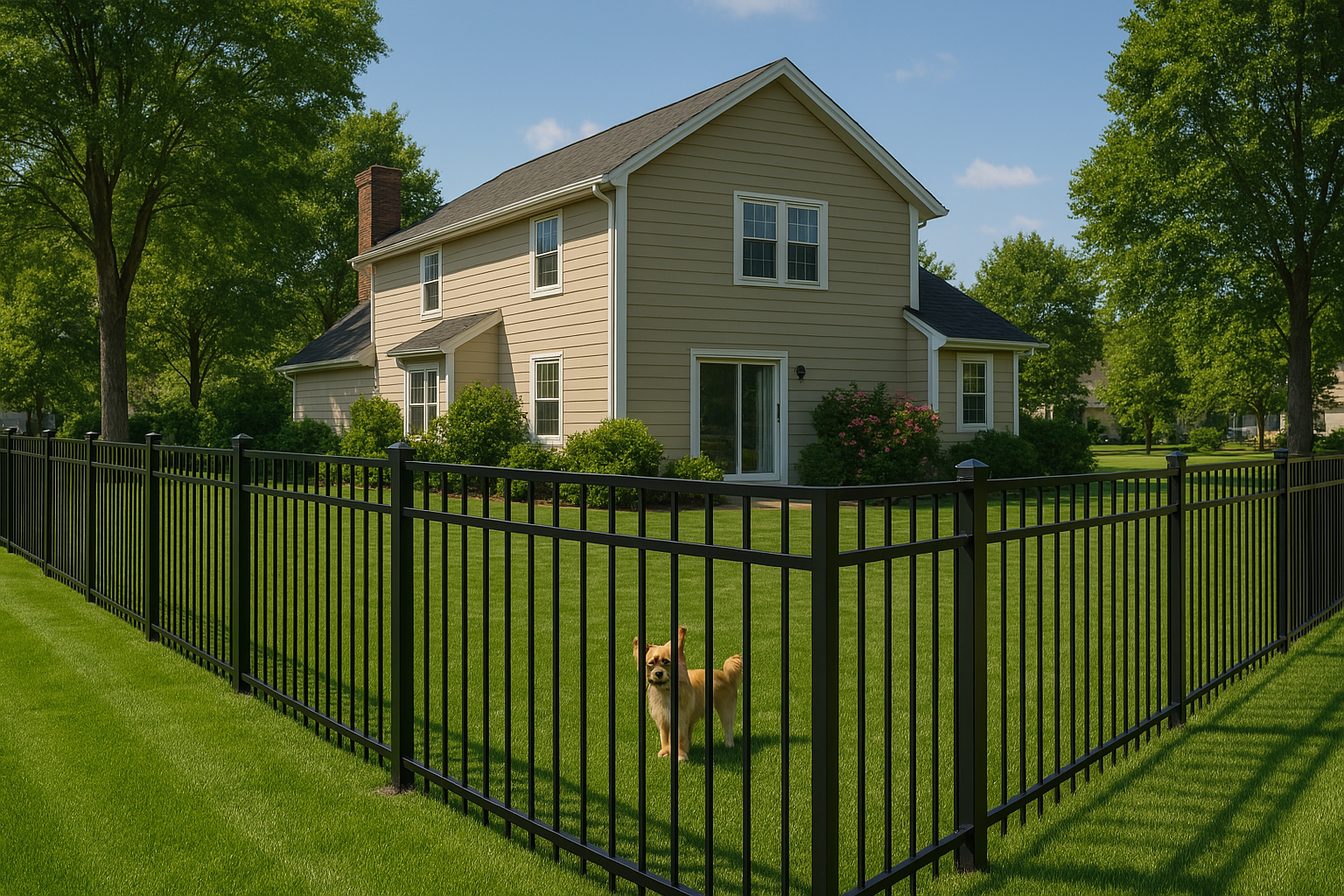
Aluminum and Wrought Iron
These bring an elegant, upscale look to your home and last for decades with minimal upkeep.
- Advantages: Strong, rust-resistant (especially aluminum), visually open.
- Disadvantages: Limited privacy, higher material costs.
- Best for: Decorative front yards, estates, or gated areas.
- Price Range: Medium to high.
Matching Fence Style with Home Architecture
The fence should complement your home, not compete with it. Consider these pairings:
- Modern homes: Sleek horizontal slats, black metal, or minimalist vinyl panels.
- Traditional homes: Picket fences or shadowbox wood designs with natural tones.
- Farmhouse or cottage: White vinyl pickets, spaced board fences, or stained cedar.
- Spanish or Mediterranean styles: Wrought iron with ornamental details or warm-toned wood.
Consistency in tone, material, and proportion helps unify your outdoor design.
How Fence Height and Placement Affect Functionality
Many municipalities restrict front yard fences to 3–4 feet and allow up to 6 or 8 feet in backyards. But it's not just about code—it’s about purpose.
- Privacy: Taller, solid-panel fences work best.
- Visibility: Shorter or open-slat designs preserve views and airflow.
- Pet Safety: Small dogs need fences flush to the ground, while larger breeds may require 6 feet or more.
- Wind and Weather: High solid fences act like sails—spacing slats or adding a lattice top can help with wind resistance.
Always mark your property lines and check setback regulations before installing.
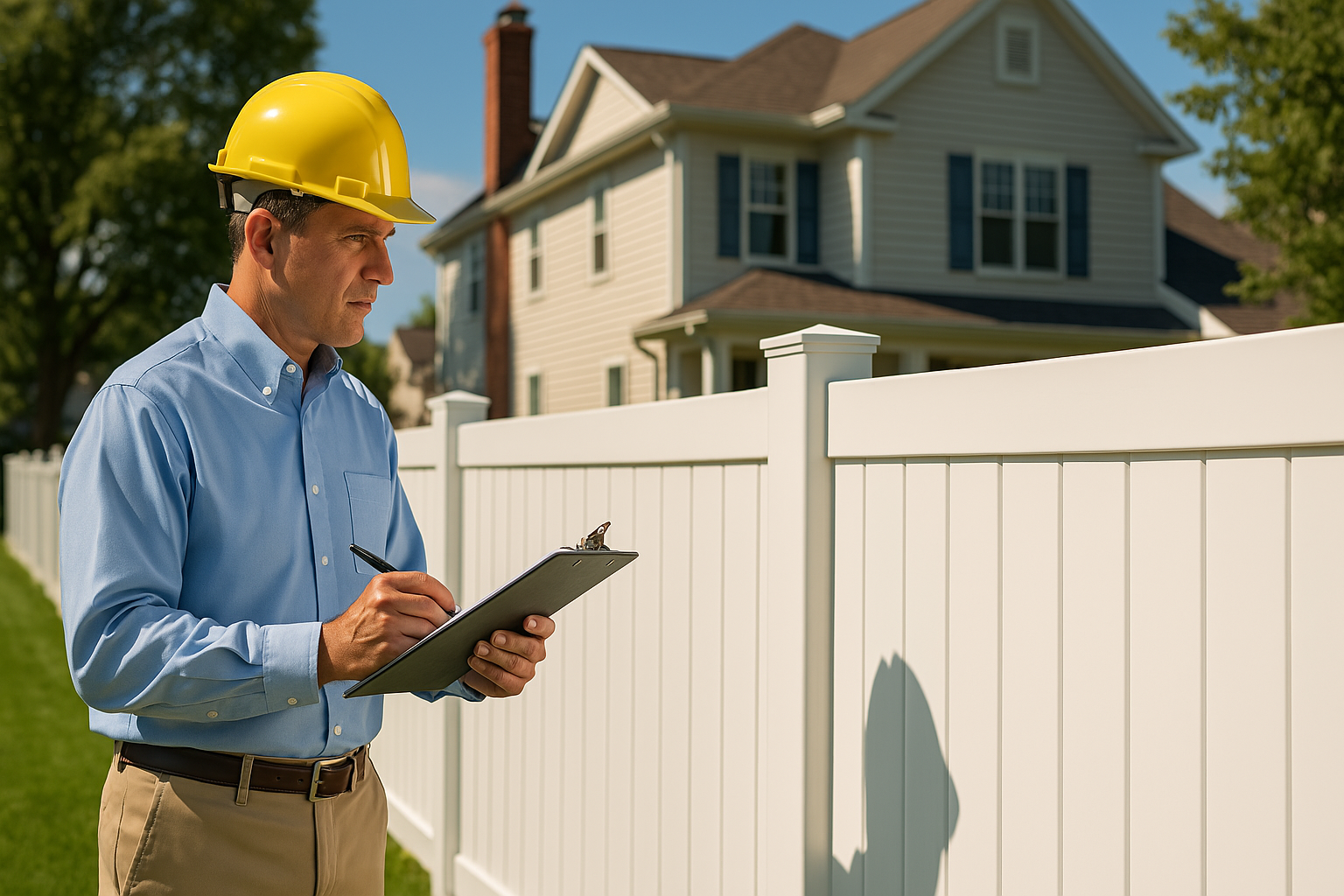
Understanding Local Laws and HOA Guidelines
The last thing you want is to install a fence and be forced to remove it. ZOR Fence helps you through the red tape.
- Permits: Many cities require permits for fences over 6 feet or for front yard placement.
- Utility Lines: Before digging, we notify 811 (Call Before You Dig) to mark underground lines.
- HOA Rules: These often dictate material, height, and color. We'll help you get approval if needed.
What the Fence Installation Process Looks Like
You deserve transparency, so here’s what to expect:
1. Consultation & Site Assessment
We measure the property, assess soil type, slope, and discuss your goals.
2. Quote & Timeline
You get a detailed estimate with materials, labor, and any permits included.
3. Prep & Permits
We pull city permits and schedule underground marking before digging.
4. Installation
Post holes are dug and secured in concrete. Panels, pickets, or rails are installed next, followed by gates.
5. Walkthrough & Cleanup
We ensure you're satisfied, make any adjustments, and leave your yard cleaner than we found it.
How to Care for Your Fence (By Material)
Vinyl
Clean with a hose or soapy water 2–3 times a year. Avoid pressure washing, which can damage the surface.
Wood
Inspect annually for rot or termite damage. Re-stain or seal every 2–3 years depending on sun exposure.
Metal (Aluminum/Iron)
Rinse occasionally to prevent buildup of grime or salt. Touch up paint if scratches appear to avoid rust.
Chain-Link
Minimal care needed. Galvanized coatings prevent rust, but occasional tightening of ties may be necessary.
Eco-Friendly Fencing: How to Build Sustainably
At ZOR Fence, we value sustainability and offer green-conscious options.
Recycled Vinyl
Some vinyl fencing uses recycled PVC, reducing landfill waste. These products are just as durable and attractive as new PVC and certified by the Vinyl Sustainability Council.
Sustainably Harvested Wood
Ask for FSC-certified wood (Forest Stewardship Council). This ensures the lumber is sourced from responsibly managed forests.
Durability = Fewer Replacements
Choosing a long-lasting fence means less material waste over time. For example, vinyl can last 30+ years without replacement, reducing your carbon footprint compared to cheaper, short-lived options.
Did You Know? Fence Facts That Might Surprise You
- The word “fence” comes from “defens,” the Middle English term for defense.
- Fences can affect home value. A well-installed privacy fence can increase property value by up to 5%.
- Not all fences need concrete footings. Some lightweight or temporary fencing can use gravel or driven posts.
- You own your side. By law, you're usually responsible for the maintenance of your side of a shared fence.
Final Thoughts
The right fence will enhance your home’s beauty, privacy, and safety. But more importantly, it should fit your lifestyle and last for years. At ZOR Fence, we don’t just build fences—we guide you through the process so your decision is informed, confident, and rewarding.
Call to Action
Let’s find the perfect fence for your home.
Get a free on-site consultation today at
zorfence.com, or call us to speak with a fence expert who’s ready to answer your questions and bring your vision to life.
